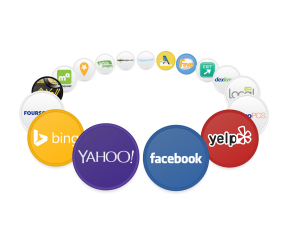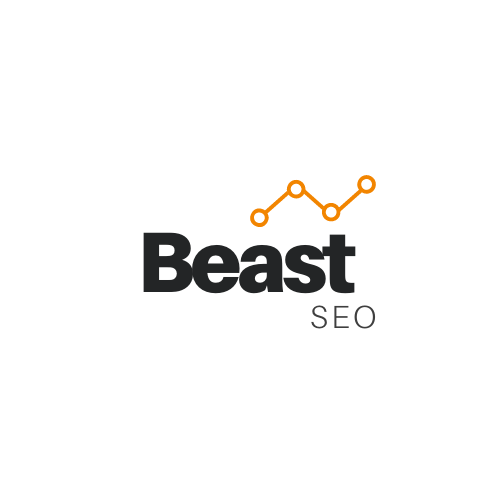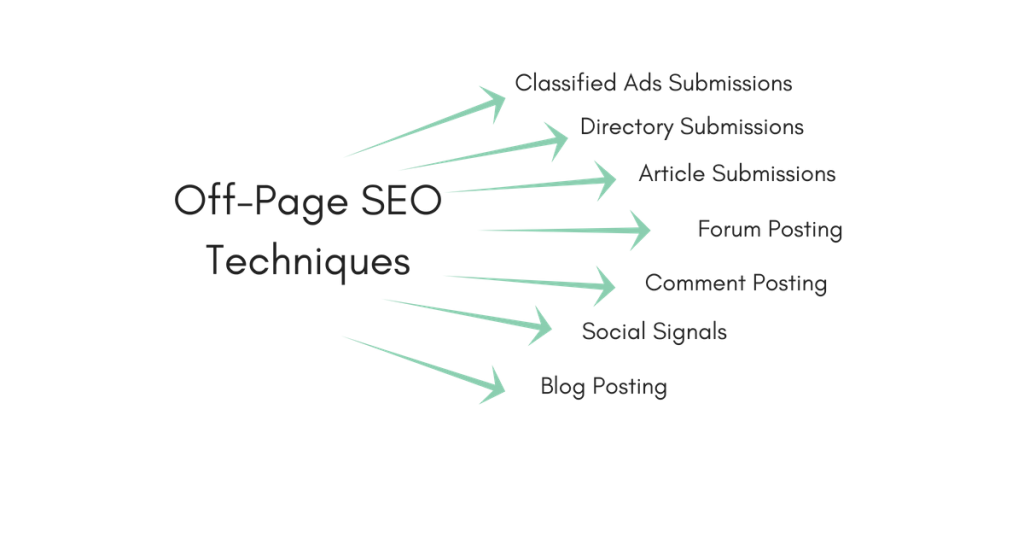This is the second in a series of articles designed for small businesses who want to improve SEO (search engine optimization) on their website. If you have not already done so, you may want to check out my previous article The Ultimate Small Business SEO Checklist – Month 1 before moving on to Month 2.
On-Page SEO Review
In Month 1 we tackled On-Page SEO where we optimized the content on your website. On-page SEO techniques are things that you can control and will determine whether search engines can find you. In month 1 we focused on:
- Identifying keywords
- Writing content
- Inserting meta titles and descriptions
- Getting Google-y
- Claiming your Google My Business listing
- Adding Google Analytics
- Creating a Google+ Page
- Embedding a Google map and a YouTube video
- Optimizing your logo and images
- Creating internal links
- Adding your social media accounts
- And, creating a blog
That was a lot to accomplish in month 1 but it laid the foundation for a strong website that is now optimized for search engines.
Off-Page SEO Explained
In month 2 we are going to be focusing on the off-page SEO techniques that will start driving traffic to your website. While on-page SEO determines whether a search engine can find you, off-page SEO judges how popular and relevant your website is.
Off-page SEO refers to the techniques you use to get other websites to link back to your website. If other websites link to your content frequently, Google (and other search engines) assume you must know what you’re talking about. That is referred to as off-page linking which means they are links that come from outside your own content.
While linking to your own content is good and helps your users easily navigate your site, search engines will give you more points if another website is linking to your content. That is where relevancy and popularity come into play. If the search engines determine that your website is relevant and popular (through external links) it will mean higher rankings on the search engine results page (SERP’s). So, off-page SEO should be a part of your online marketing strategy.
For more information on off-page SEO you can check out this quick video.
Top 7 Off-Page SEO Techniques
In month 2 we will be working on building links to your website from other websites. The top 7 off-page SEO techniques are listed below and I will go over them in some detail for you.
But first, a word of warning
Before we get started I want to mention one thing. You may have read some articles on buying links and may be tempted to take the easy route. However, I would strongly advise against that. Many companies offering this service will do this on your behalf but you could actually be penalized in a couple different ways.
First, Google clearly states that buying back links is against their guidelines. They will penalize you for this. The other issue is that you never really know what you’re getting. Many of the companies selling back links are selling links from low-quality sites and can be viewed as spammy. Google will ultimately find them and penalize you for that as well. My recommendation is to take the ethical route, follow the guidelines below and build high-quality links for which Google will reward you.
1. Advertise with local classified ad postings
Online classified advertising is simply creating an ad for your product or service with an interesting description. It can include details about your product/service, name, address, phone number, website URL, price, email address, and any other information you want to include. This will reach a different target audience and drive more traffic to your website.
description. It can include details about your product/service, name, address, phone number, website URL, price, email address, and any other information you want to include. This will reach a different target audience and drive more traffic to your website.
The process is simple.
- Identify classified ad posting directories. The obvious one that comes to mind is Craigslist.org but there are other classified ad posting directories. Find the top ones in your local area but make sure they get good page rank.
- Understand and follow their posting guidelines.
- Create your classified ad. Keep your ad short (no more than 500 words) and describe your product or service in a way that will get people to want to visit your site.
- Classified ad syndication. You may be able to find sites that will post your ad to several classified ad sites. This could save you lots of time.
2. Directory Submissions
 Local business directory listings are online directories that contains your company’s Name, Address and Phone Number (NAP) along with other details about your business. Websites like Yelp, Foursquare and Yellow Pages are local directories. And, there are many more like these. Directory listings are also called citations by SEO folks.
Local business directory listings are online directories that contains your company’s Name, Address and Phone Number (NAP) along with other details about your business. Websites like Yelp, Foursquare and Yellow Pages are local directories. And, there are many more like these. Directory listings are also called citations by SEO folks.
Creating local business listings on these directories is a key driver of links back to your site. There are two main reasons for getting your business listed on local directories. First, you want your business to be visible on all the different platforms so your customers can find you. And, accurate and consistent information about your business across the internet creates trust among search engines and will increase your rankings.
There are four types of directory listings you want to create.
- Google My Business listing – This is a must for a local business. For more information on creating and claiming your Google My Business listing go to my recent article Google My Business Account – Optimize Your Listing.
- Core Directories – For a list of the Top 50 Directory (citation) sites click here.
- Geo and Industry-Specific Directories – These will vary depending on your industry or geographic location. Go to Top Local Citations by Business Category to find the best directories for your industry.
- Unstructured Citations (Listings) – An unstructured citation happens when your business appears on a website or app that is not specifically designed for business listings. For example, if your business appears in a news article, blog post or on social media, it acts just like a structured citation and gives you all the SEO benefits.
3. Article Submissions
An article submission refers to writing an article that is relevant to your industry and submitting it to another site to be published. The article would obviously have a link back to your website from the article itself. It is a great way to get back links to your site.
There are a couple ways to do this. First, there are literally hundreds of article submission sites that will accept your article and publish it on their website. Each site has their own acceptance guidelines so make sure you understand what those are before you submit your article.
My recommendation would be to start with your network of local business contacts and people you know in the industry. Write a high-quality article that is industry-specific or highlights one of your business partners, and ask them to post it on their website. It’s a win-win situation as you get a link back to your site and they get great content for their website. And, it helps you build a strong referral relationship with key business partners.
4. Forum Posting
Forums are online communities of like-minded people or others in your industry who are sharing information and discussing topics. Quora is an example of an online forum. And there are plenty of others that are industry-specific. Are you involved in an online forum in your industry or niche? If not, you should be.
Answering questions or engaging with others on forums can increase your visibility and boost your credibility. Most forums will allow you to link back to your website as well which will certainly help your SEO. Find an online forum where like-minded people in your industry are gathering and start engaging with them. It will boost your credibility and your SEO.
5. Comment Posting
Another way to build quality back links, as well as your credibility in your industry, is to comment on other blogs. This takes time but it can be very helpful in building links back to your site
Benefits of commenting
- You build credibility among peers in the industry. Make sure you are commenting on blogs that you know something about and make sure your comment is relevant to the post and helpful in some way. You don’t want your comment to seem spammy or the administrator of the blog will not approve your comment.
- You can comment on blogs that have a high domain authority (DA) which will have a positive effect on the ranking of your site.
- Some back links from blogs may be what’s called ‘no-follow’. But, even if that is the case the search engines will still find and index your site.
6. Social Signals
Social media is quickly becoming the way a lot of businesses are ranking at the top of search engine results through customer feedback known as social signals. This has become a huge factor in the success (or failure) of many businesses in ways that can’t compare to the traditional SEO ranking methods.
Social signals are the likes, shares, pins, votes, and views that people put on Facebook, Twitter, Pinterest, LinkedIn, and other social media platforms that get picked up by search engines. These social signals indicate that your business is being talked about by customers. This moves your business up in search results because search engines view this as a trusted recommendation.
Some in the SEO field think that social signals could soon replace links as a key ranking factor.
What your business should be doing
- If your business has not created a social media presence you should start that right away. I would recommend Facebook and Google + (because it’s Google and Google likes Google) to start with. Twitter is also a good platform and reaches a different audience so you may want to consider that as well. Pinterest is also a good site if your business is visual, say in the fashion industry.
- Don’t try to dominate all social media platforms at once. Start slowly. Create a strong following on one platform to begin with and then grow from there.
- Put regular updates on social media. Don’t let your site stagnate. It’s a perfect place for highlighting new products or services as well as promotions. And, don’t forget to share your blog posts to your social media pages.
7. Blog
 I know we talked about this before and in the Month 1 SEO training, but it is so important to SEO that I want to talk about it again. Search engines like relevant and fresh content. You need to keep adding content to your website, not only to indicate to search engines that it’s still alive, but every bit of content is keyword rich and will help your site rank.
I know we talked about this before and in the Month 1 SEO training, but it is so important to SEO that I want to talk about it again. Search engines like relevant and fresh content. You need to keep adding content to your website, not only to indicate to search engines that it’s still alive, but every bit of content is keyword rich and will help your site rank.
Create a schedule and write a regular blog post. It could be once a month or once a week. Pick a regular schedule that works for you and that you can commit to. Then, share your blog on your social media platforms. I did this religiously with my home care agency and it certainly helped me climb in the search engine results.
For more information on blogging check out my previous article Does Blogging Help SEO? Hell Yes and 6 Reasons Why.
You Are Now Conquering Your Competition
Well, we covered a lot of ground in The Ultimate Small Business SEO Checklist – month 2! In Month 1 you built a solid SEO foundation for your website. In month 2 you began working on building quality links back to your website using several techniques.
Keep in mind that SEO is not a race won by the hare. It’s won by the turtle. Keep moving along and start to systematically implement each of these techniques one at a time. Do this and you will have a website (and a business) that is relevant, credible, trusted, and that ranks on page one!
I do realize that this sounds like a lot of work, especially for someone trying to run a business. If there is anything I can do to help you with your local SEO I’d be more than happy to. Or, leave a comment below if you have a question.






Great post. It covers all most everything in Local SEO. the only thing that you did not cover was add the JSON-LD Schema to the header. It can also help in telling Google who and what they are in business for. I find it takes around 20 to 30 hours a month to maintain this level of local SEO. I was wonder if you agree with this the amount of time it takes to maintain local SEO?
Thanks
Dave
Thank you for your feedback. You are right, I did not cover JSON-LD Schema. But, I will definitely focus on that in my Month 3 Checklist. Thanks. Sometimes SEO can be so overwhelming to small business owners so I’m trying to break it down into some tiny chunks. And yes, I would have to agree with you that this takes a good 20 to 30 hours/month to maintain that level of SEO. I think that’s why a lot of local business owners don’t do it.
Thanks again for your feedback!
Vic
Great tips here buddy! I’ve been doing most of the stuffs that you listed here, though forums are new to me. I’ve been on quora for years and never thought about using it to bring traffic and link to my site! Many thanks for that great suggestion. Just wondering are the links from these forums are do follow or no follow?
Isaac,
Thanks for your comment. Most forums now are no follow but there is still some value to joining and being active on popular forums in your niche. It’s a great way to build referral traffic.
Vic